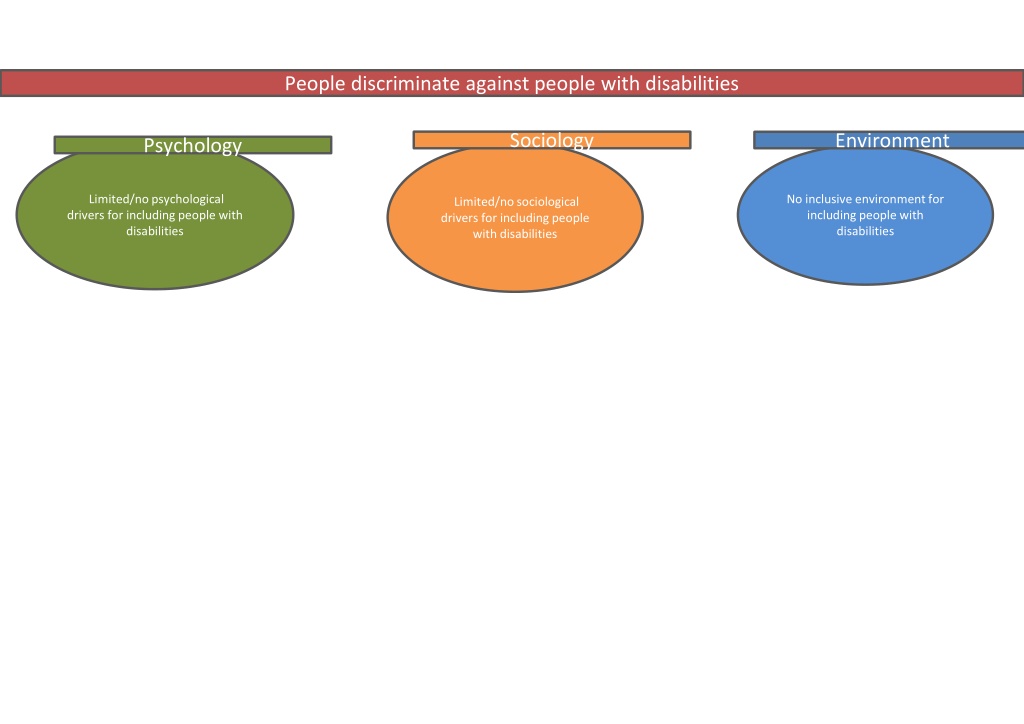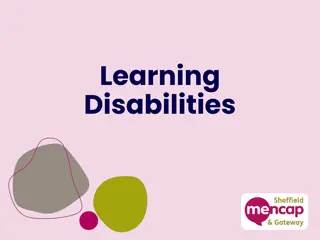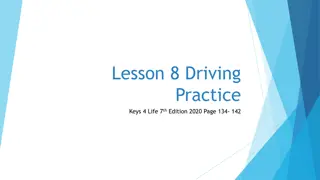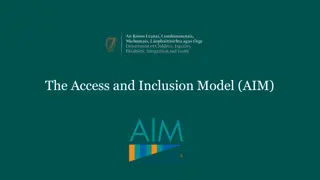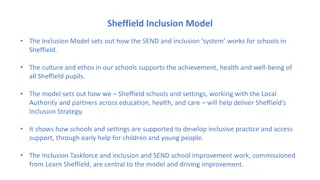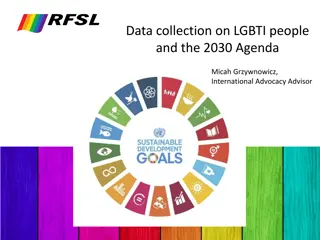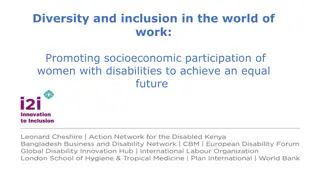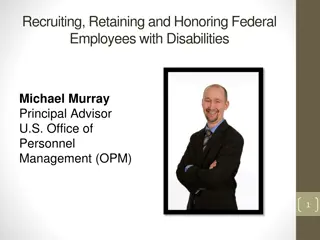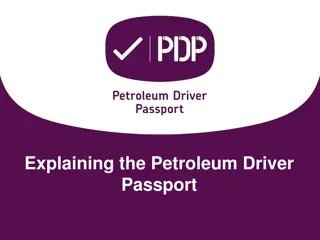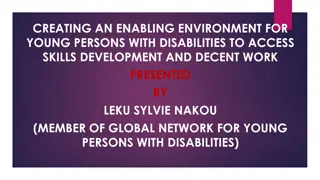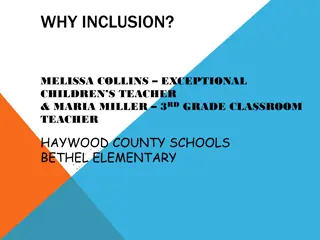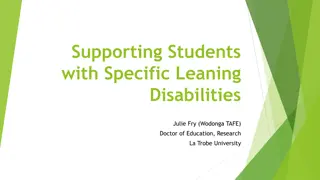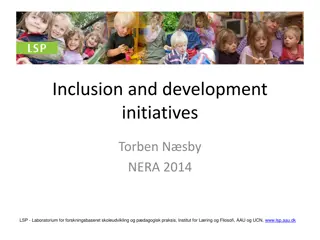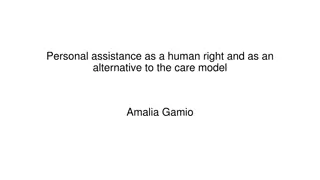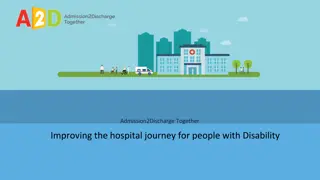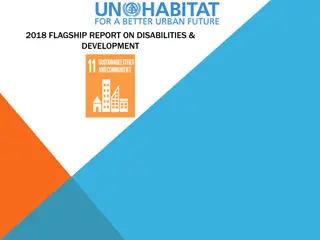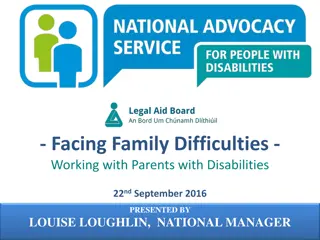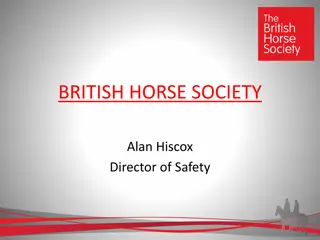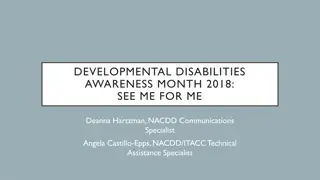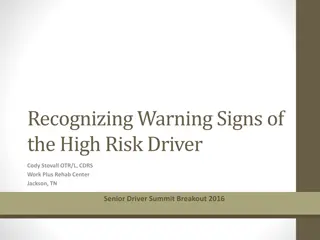Understanding Drivers for Inclusion of People with Disabilities
The content explores various drivers influencing the inclusion of individuals with disabilities, spanning across sociology, psychology, and environmental factors. It delves into the significance of national policies, funding, institutional procedures, self-efficacy, accessibility, and more in fostering an inclusive environment. The drivers emphasized include self-efficacy, curriculum values, social norms, emotional aspects, and the importance of societal engagement.
Download Presentation

Please find below an Image/Link to download the presentation.
The content on the website is provided AS IS for your information and personal use only. It may not be sold, licensed, or shared on other websites without obtaining consent from the author. Download presentation by click this link. If you encounter any issues during the download, it is possible that the publisher has removed the file from their server.
E N D
Presentation Transcript
People discriminate against people with disabilities Sociology Environment Psychology Limited/no psychological drivers for including people with disabilities No inclusive environment for including people with disabilities Limited/no sociological drivers for including people with disabilities
National policies and procedures Presence of national policies and procedures on disability inclusion Funding Presence of funding Enjoyment Experience of pleasure, satisfaction, or positive affect during engagement with an activity or experience Institutional policies and procedures Self-efficacy Accessibility Human resources The staff have the capabilities to effect change, and believe that they have these capabilities The physical structure is accessible for all people The number of staff needed to provide a high-quality disability service The existence of quality disability-inclusive policies and procedures Perceived risk Perception of potential negative consequences or uncertainties associated with a particular action, decision or situation Self-efficacy Curriculum Extent to which disability-inclusive values are systematically taught Outcome expectancy Programming The teacher s objective capability to perform a change and their belief about their ability The production of disability-inclusive communication materials An individual's anticipation of the consequences or outcomes that will result from conforming to or deviating from social norms Reinforcement Moral development in schools Structural environment Communication environment Process of providing a consequence, such as a reward or punishment, following a behaviour, with the aim of increasing the likelihood of that behaviour occurring again in the future Perceived gains and avoided losses Perceived benefits of doing a certain behaviour Values that the education system teaches Number and quality of institutions or opportunities for inclusion What a person is exposed to through media Effort needed Positive deviance ENVIRONMENTAL DRIVERS Perceived cognitive and physical exertion needed to perform a task Individuals practising behaviours that deviate from prevailing norms Social learning Interest Process through which individuals acquire new behaviours, knowledge and attitudes by observing and imitating others in their social environment Aperson believes the issue at stake is something that will affect them personally Knowledge Beliefs Worthiness Perception that the movement s cause is morally just and deserves support Facts and information acquired Mental processes including stereotypes (cognitive knowledge structures that generalize a group s characteristics) Attitudes Social norms Feelings, opinions and beliefs about people, objects and ideas Self-efficacy Shared expectations or standards of behavior within a specific social group or society Demand through social movements Contact Particular contact between groups Unity Aperson s objective capability to effect a change, and their belief about their ability The sense of belonging and solidarity that individuals experience when they join a movement Emotions Actions of a group to seek, support and/ r advocate for things to be done in a certain way SOCIOLOGICAL DRIVERS Feelings Numbers PSYCHOLOGICAL DRIVERS A critical mass of participants Values Enduring beliefs about what is desirable, important and morally right Commitment Level of dedication and engagement individuals have toward the movement's goals Skills Rehearsal and practice Acquired ability to do something well Articulating, publicly defining and practicing a behaviour
People discriminate against people with disabilities Funding There is a lack in funding for inclusive spaces National policies and procedures There is a lack of national policies and procedures supporting disability inclusion Enjoyment People do not perceive engaging with people with disabilities as enjoyable Institutional policies and procedures Accessibility Self-efficacy Human resources Staff do not have the self-efficacy to be inclusive of people with disabilities The physical structure is not accessible There are not enough staff to provide a disability- inclusive service The institution does not have quality disability- inclusive policies and procedures Perceived risk People perceive engaging with people with disabilities as being high-risk Self-efficacy Curriculum The curriculum does not impart values that support inclusion Programming Teachers do not have the self- efficacy to teach and practise inclusive behaviours and values Outcome expectancy Disability-inclusive communication materials are not produced People expect to be sanctioned when they practise disability- inclusive behaviours Reinforcement Moral development in schools Structural environment Communication environment Inclusive behaviours are not reinforced Perceived gains and avoided losses People do not believe that being inclusive of people with disabilities benefits them Students do not learn to value the inclusion of people with disabilities through their education There are no or limited inclusive spaces for people with disabilities People are exposed to negative or no images of peole with disabilities in Positive deviance media Effort needed ENVIRONMENTAL DRIVERS There are not enough visible positive deviants People perceive that being inclusive requires too much effort Social Social learning Interest People do not learn inclusive behaviors by observing others Social norms People are not interested in disability inclusion Knowledge Beliefs Worthiness People have limited or false information on disability Contact People adhere to stereotypes that deem people with disabilities to be dangerous, unpredictable, difficult, shameful, blamable, curable People do not perceive the cause of disability inclusion as being morally just or deserving of support Attitude There is a prevailing negative social norm that prevents disability inclusion People believe that people with disabilities shouldn t and can t be included in society Self-efficacy People have no or negative contact with people with disabilities Demand through social movements Unity People do not have the self- efficacy to practise inclusive behaviors People within the movement do not have a sense of belonging and solidarity There is a lack of successful social movements for disability inclusion Emotions People feel fear, pity and/or anger PSYCHOLOGICAL DRIVERS SOCIOLOGICAL DRIVERS Numbers There are not enough people participating in the movement Values People do not hold values that support disability inclusion Commitment People are not dedicated or engaged for disability inclusion Skills Rehearsal and practice People have not acquired the ability to be inclusive of people with disabilities People have not practised skills needed for disability inclusion
People practise disability-inclusive behaviours National policies and procedures National policies and procedures on disability inclusion are in place Funding Funding for disability- inclusive spaces is available Enjoyment People perceive engaging with people with disabilities as enjoyable Institutional policies and procedures Accessibility Self-efficacy Human resources Staff have the self- efficacy to practise inclusive behaviours The physical structure is accessible There are enough staff to provide a disability- inclusive service The institution has quality disability-inclusive policies and procedures Perceived risk People perceive engaging with people with disabilities as being low-risk Self-efficacy Curriculum The teaching of disability-inclusive values is embedded in the curriculum Programming Outcome expectancy Teachers have the self- efficacy to teach and practise inclusive behaviours and values Media institutions and personnel produce disability-inclusive communication materials People expect to be socially rewarded when they practise disability- inclusive behaviours Reinforcement Moral development in schools Structural environment Communication environment Inclusive behaviours are reinforced Perceived Gains and Avoided Losses People believe that being inclusive of people with disabilities benefits them Students learn to value the inclusion of people with disabilities through their education There are inclusive spaces for people with disabilities People are exposed to positive images of people with disabilities in media Positive deviance There are enough visible positive deviants Effort Needed ENVIRONMENTAL DRIVERS People perceive that being inclusive requires reasonable amount of effort Social learning Interest People learn inclusive behaviors by observing others Social Norm People are interested in disability inclusion Knowledge Beliefs Worthiness People perceive the cause of disability inclusion as morally just and deserving of support There is a prevailing positive social norm that supports disability inclusion People have sufficient and accurate information about people with disabilities People think that people with disabilities are people beyond their disability and are part of human diversity Attitudes People believe that people with disabilities should and can be included in society Self-efficacy Demand through social movements Contact Unity People have positive contact with people with disabilities There is a successful social movement for disability inclusion People within the movement have a sense of belonging and solidarity People have the self-efficacy to practise inclusive behaviours Emotions People feel empathy towards people with disabilities PSYCHOLOGICAL DRIVERS SOCIOLOGICAL DRIVERS Numbers There are enough people participating in the movement Values People have positive values that support disability inclusion Commitment People are dedicated and engaged for disability inclusion Skills Rehearsal and practice People have acquired the skills to be inclusive of people with disabilities People have practised disability-inclusive skills
People practise disability-inclusive behaviours National policies and procedures National policies and procedures on disability inclusion are in place Funding Funding for disability- inclusive spaces is available Enjoyment Output 8.3 Output 8.4 Output 8.2 Output 8.1 People perceive engaging with people with disabilities as enjoyable Accessibility Self-efficacy Human resources Institutional policies and procedures Staff have the self- efficacy to practise inclusive behaviours The physical structure is accessible There are enough staff to provide a disability- inclusive service The institution has quality disability-inclusive policies and procedures Perceived risk Output 7.2 Output 7.1 People perceive engaging with people with disabilities as being low-risk Output 9 Self-efficacy Curriculum The teaching of disability-inclusive values is embedded in the curriculum Output 3.1 Programming Outcome expectancy Teachers have the self- efficacy to teach and practise inclusive behaviours and values Media institutions and personnel produce disability-inclusive communication materials Intermediate outcome 8 Intermediate outcome 7 Intermediate outcome 9 People expect to be socially rewarded when they practise disability- inclusive behaviours Reinforcement Moral development in schools Structural environment Communication environment Inclusive behaviours are reinforced Perceived gains and avoided losses People believe that being inclusive of people with disabilities benefits them Output 3.2 Students learn to value the inclusion of people with disabilities through their education There are inclusive spaces for people with disabilities People are exposed to positive images of people with disabilities in media Output 3 Positive deviance There are enough visible positive deviants Effort needed ENVIRONMENTAL DRIVERS Intermediate outcome 3 People perceive that being inclusive requires a reasonable amount of effort Intermediate outcome 4 Social learning Interest People learn inclusive behaviours by observing others Social norms People are interested in disability inclusion Intermediate outcome 1 Output 1.1 Output 6.1 Intermediate outcome 5 Knowledge Beliefs Worthiness People perceive the cause of disability inclusion as morally just and deserving of support Output 6.2 There is a prevailing positive social norm that supports disability inclusion Intermediate outcome 6 People have sufficient and accurate information about people with disabilities People think that people with disabilities are people beyond their disability and are part of human diversity Attitudes People believe that people with disabilities should and can be included in society Self-efficacy Demand through social movements Intermediate outcome 2 Contact Unity People have positive contact with people with disabilities There is a successful social movement for disability inclusion People within the movement have a sense of belonging and solidarity People have the self-efficacy to practise inclusive behaviours Output 1.2 Emotions People feel empathy towards people with disabilities Output 6.3 PSYCHOLOGICAL DRIVERS SOCIOLOGICAL DRIVERS Numbers Output 1.3 There are enough people participating in the movement Output 6.4 Values People have positive values that support disability inclusion Commitment People are dedicated and engaged for disability inclusion Output 2.2 Output 2.1 Skills Rehearsal and practice People have acquired the skills to be inclusive of people with disabilities People have practised disability-inclusive skills
